The most secret flight TB-7
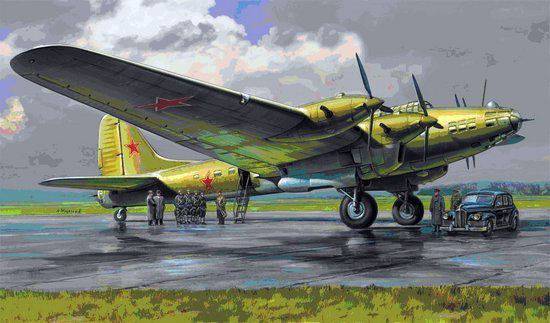
In April 1942, a heavy four-engine TB-7 bomber flew up from the Ramenskoye aerodrome near Moscow and headed west - across the front line, to England. One of the most experienced crews drove the terrible car, which had recently flown to bomb Berlin, Danzig and Koenigsberg. aviation long-range action (ADD) under the command of Major Sergey Asyamov.
Before the flight, the commander of the crew and co-pilot Major E. Pusep had been told by the ADD command that the government had purchased a bomber batch in England. For them in the near future will be sent crews on the same route, if it turns out to be safe.
But, as often happens in war, then pilot Asyamov could not know the whole truth about the true purpose of the flight, as he could not know that he had only three days to live and that he would forever lie in a foreign land.
At that time, only three people knew the true purpose of the flight: Supreme Commander I. Stalin, People's Commissar for Foreign Affairs V. Molotov, and ADD Commander Lieutenant General A. Golovanov. It was he who was commissioned to develop the safest and shortest route. And in order to classify the real purpose of the flight - to check the safety of the route of our delegation to England and the United States to sign joint documents on the war against fascist Germany and its allies, and the opening of the second front - it was decided to take advantage of the offer of the British to sell us four-engined bombers.
For the first trial flight to England, a mixed crew was made up consisting of 12 people and consisted of former polar aviation pilots and personnel military pilots. In determining the commander of the crew, the choice fell on Sergey Asyamov, on whose account there were already several dozen combat missions. The second pilot, the commander of another crew of the TB-7, Endel Pusep, by April 1942, made 30 night combat missions for bombing important military targets in the rear of Nazi Germany. The navigator, Major Alexander Shtepenko, by that time carried out 28 sorties, the second navigator, Major Sergei Romanov, made more than 20 night sorties for the bombardment of the enemy's deep rear.
The plane on which it was decided to fly was a heavy bomber of the TB-7 design by Petlyakov. The design of this machine was started back in the 1934 year, and a prototype appeared already in the 1936. After the completion of flight tests, the serial production of this aircraft began in the 1939 year. The TB-7 marked the revolutionary transition from low-speed to high-speed aviation. Good aerodynamics, powerful AM-35A engines (1360 hp each), extensive use of high-strength alloys, retractable landing gear, remote control of a number of important engine units - these are the characteristic features of this bomber.
The car had excellent armament, consisting of twin ShKAS machine guns in the nose of the fuselage, two heavy UTB machine guns placed behind the nacelle in rifle installations, and two ShVAK-20 cannons in the stern and fuselage parts behind the last wing spar.
Normal bomb load was 2000 kg, and in the overload version 4000 kg. By the way, on one of the modifications of this aircraft earlier than in the USA and England, a five-ton bomb was raised into the air. The speed of the serial TB-7 at an altitude reached 442 km / h, the flight range - 3600 km, the ceiling - 9300 m.
The TB-7 aircraft was created and began life in the difficult conditions of incomplete clarity for the country's leadership the very question of the extent to which this essentially strategic bomber, which required so much deficient duralumin, was necessary for us. Therefore, its serial production was suspended several times, but then after some time it was resumed again. As a result, by the beginning of World War II there were only a few dozen of these machines, of which 13 were destroyed by the Germans on the ground on the first day of the war.
On April 26, Asyamov and Pusep reported to the division commander, Colonel V. Lebedev, about their readiness for flight. On April 28, four passengers arrived at the airfield, among which was the stenographer from the National Commissariat of Foreign Affairs V. Pavlov.
The plane took off safely and over time crossed the front line. The flight over the Baltic Sea took place almost blindly at an altitude of about 7500. A strong wind broke the navigators' calculations, and the plane arrived at the coast of Scotland two hours earlier than expected.
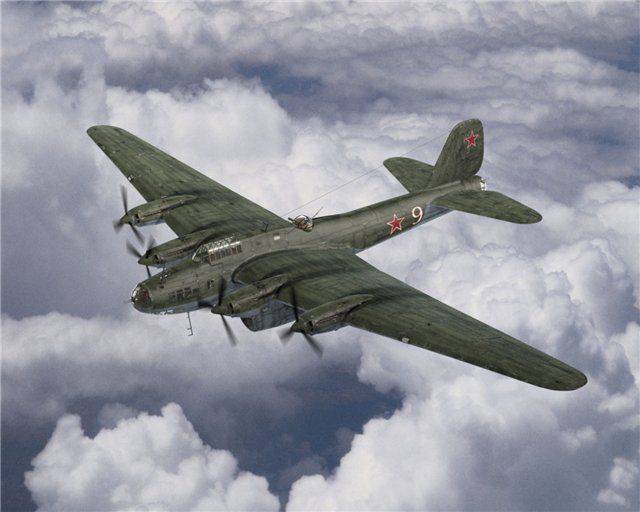
29 April at 4 in the morning Asyamov landed a four-engine car at Teeling airfield. After a short rest, the crew, together with Pavlov and his attendants, flew an English Flamingo aircraft to London. The flight lasted almost three hours, after which the plane landed at Hendon Airport, in the north-western suburbs of the English capital.
The next day, the British expressed their desire to show the employees of the Soviet military mission and the pilots an aviation exhibition in East Fortune. For this purpose, the same aircraft was prepared that could take only ten people on board. I had to cast lots among the pilots. The choice fell on Sergey. Colonel N. Pugachev, deputy head of the Soviet military mission in Great Britain, and Major B. Shvetsov, military assistant attache for aviation, Secretary of the Mission, military engineer 2 of rank P. Varanov, flew with him.
On the way back, two hundred miles from London. "Flamingo" suddenly ignited in the air and fell to the ground. Under its rubble, the remains of members of our delegation were found with difficulty. So tragically cut short the life of Major S. Asyamov. The crew experienced the ridiculous death of the commander. However, it was necessary to return home.
The next day, the TB-7 bomber took off and headed east to land in an airfield in a few hours. When returning to Moscow, the crew commander was Pusep, and Romanov, who had piloting skills, flew in place of the co-pilot.
Stalin, convinced of the safety of the flight on this route, on May 5 ordered Golovanov to prepare the plane for the next flight. This time, Molotov and the group of specialists accompanying him were to fly to London and Washington.
The crew was replenished by an experienced combat pilot, captain Vasily Obukhov, who was supposed to fly as a co-pilot. A great deal of work on preparing the aircraft for flight of particular importance was done by the engineering and technical staff led by the chief engineer of the ADD, Lieutenant-General Aviation I. Markov. For a whole day, members of the commission examined and checked the aircraft, its engines, equipment; on May 10, the plane was taken over by the commission and placed under protection.
Time passed, but the British did not give “good” to the reception of the aircraft due to bad weather conditions. Finally, consent was obtained, and in the evening, on May 19, a group of nine passengers arrived at the airfield, including Molotov. On board the aircraft, Vyacheslav Mikhailovich immediately informed the crew that he was at their complete disposal and ceased to be the “second man in the country” because the main pilots in the sky.
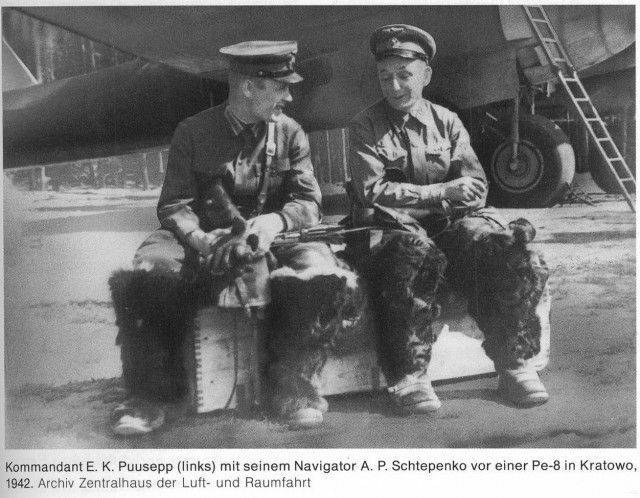
Placing an additional number of passengers on a bomber was not so easy. The usual amenities for a passenger plane were not mentioned here. But it was to fly at high altitude, in conditions of oxygen starvation and low temperature. Before departure, the passengers were dressed in fur flight overalls, helmets and high fur boots, each was given two parachutes and an oxygen device, and instructed how to use it all. It is strictly forbidden to doze or sleep in flight, so that when you put on an oxygen mask on your face, do not accidentally bend the oxygen supplying rubber tube. In any case, the commander instructed the radio operator D. Kozhin to check the status of passengers every 15 minutes.
According to the weather service, to the north-west of Moscow just at that time passed a thunderstorm front. But they decided not to transfer the flight, and in 18 h 40 min TB-7 took off.
The flight was normal, only at dawn someone noticed an oil stain on the wing behind the extreme right engine. Fortunately, the temperature and oil pressure in this engine remained normal.
It's time to decline. Edinburgh sailed down below. 2600 km left behind. As it turned out, the capital of Scotland was protected from air raids by hundreds of balloons, which were lowered to the ground as our bomber approached. Guests from Russia were waiting here. Having flown low over Edinburgh, the TB-7 soon ended up at the familiar Deeling airfield from the previous flight, where honor guard from Scottish shooters in traditional checkered skirts was lined up in honor of the Soviet government delegation. After the welcoming ceremony, our delegation headed for the aircraft to the city of Dundee, and from there a special train went to London.
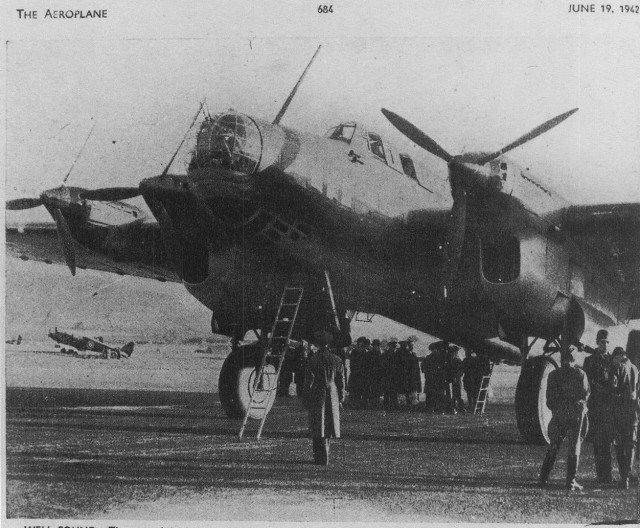
As is known, negotiations with the British were extremely difficult. Churchill flatly refused to sign a document on the adoption of our post-war borders with Poland and Romania and on the recognition of our territory of the Baltic States. Only after our delegation, with Stalin's permission, removed the territorial issue, did Molotov and Eden sign the 26 of May for a Soviet-English alliance treaty for a period of 20 years. However, Churchill refused to sign a document on the opening of a second front in 1942.
The time has come to fly our delegation to Washington to meet with Roosevelt. For the flight TB-7 across the North Atlantic, the crew overtook a bomber from the Teeling airfield to the Prestwick airfield on the west coast of Scotland. During this war, Allied airplanes were launched from this airfield, heading across the ocean to the USA.
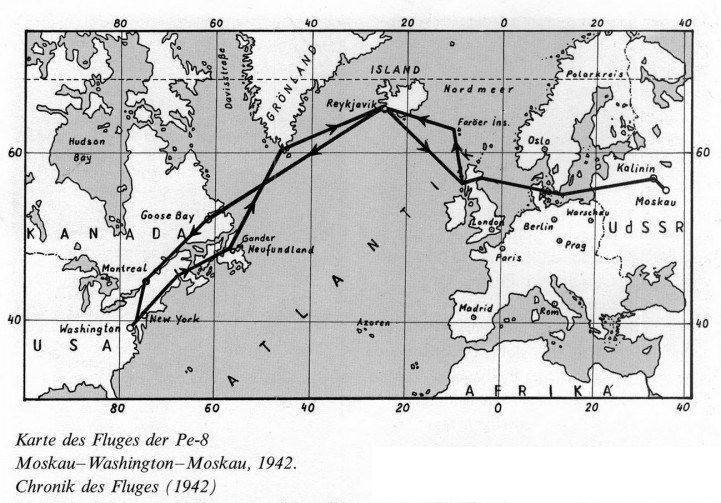
The further flight of TB-7 in the United States, according to the previously developed route, was to go through Iceland and Fr. Newfoundland, where previously none of the crew members was. Aircraft TB-7 landed safely at the airport in Reykjavik. Next in line was Newfoundland. The British insistently recommended the crew to land at the Gander airfield, but one American colonel, who was at that time in Reykjavik and flying from the USA to Europe, told Pusap: “I know who is flying with you. It is not necessary to fly to Newfoundland, where you are advised Britons - there is always fog and you can break. And in Gus-Bey a good microclimate, there you will definitely sit down well. ” And he showed on the map the location of the American secret base Gus Bey.
Pusep recalled: “We were flying on the highway, which was approved by the command, but we were flying carefully and I was convinced that the American pilot was right. Having turned away from the plane of fog, I sat in a sunny Goose Bay, it was a complete surprise for the allies. "
The Americans warmly greeted our crew. Next flight to Washington passed through Canada. Flying near Montreal, the crew learned that they would now be escorted to Washington by a “flying fortress”. Indeed, the pilots soon noticed a silver B-17, which, however, disappeared as soon as the weather changed for the worse. Our bomber had to go down to the small height to flying below the clouds, follow the landmarks.
As soon as TB-7 landed at the airfield in Washington, the government delegation of the USSR and the crew of the aircraft were invited to the White House to meet with the president.
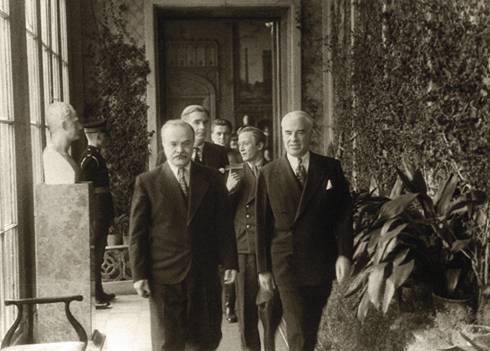
Talking about the negotiations, Molotov recalled. "Stalin gave me directions that they 30-40 German divisions themselves drew off. And I demanded it. When I flew to America, I told Roosevelt this, and in my heart I was surprised at his answer: “A legitimate, correct demand ...” He accepted my Communique without any amendments that the second front would open in 1942 year. Roosevelt signed all the papers for me, and with these documents I decided to fly to Churchill again. ”
Churchill was surprised to learn that Roosevelt had signed the Communique on the opening of the second front. Now he had no choice but to follow this document after the President of the United States. However, Churchill did not change himself here either and presented our delegation with a “Memorandum”, the content of which indicated that the British side did not consider itself bound by the obligations set forth in the Communiqué.
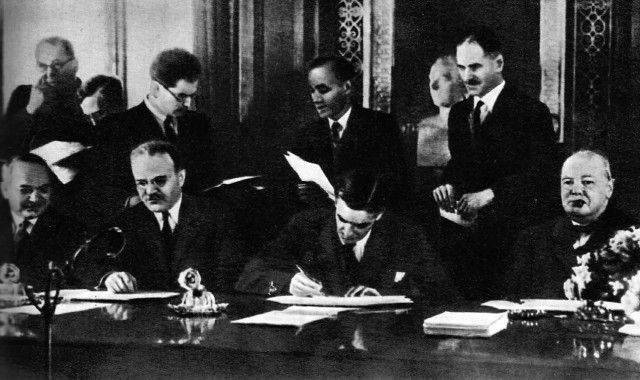
The Allies took all measures to keep our delegation in the UK and the USA a secret, but the Americans could not help but notice the unusual red star bomber. When the crew members arrived at the airfield, they were warmly welcomed, presented with gifts, exchanged souvenirs with them. These meetings were discreet Pusep compared with the Babylonian pandemonium.
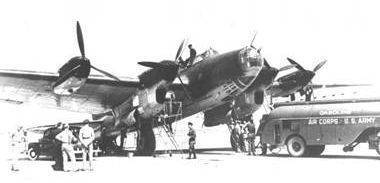
It was not without excitement that our pilots recalled the day when their plane left America. As soon as the bomber taxied out onto the runway, the Americans started shouting, throwing up hats, chauffeurs — honking, people followed the plane, the cars rushed off ...
But the day came when TB-7 was supposed to leave England and fly to Moscow. The British offered the crew not to return by the same route, but through Africa and Iran. Molotov turned to Pusep. to get his opinion. Pusep told him that this time of year above the deserts of North Africa, high fever, and the engines simply will not stand.
Molotov decided to send the text of the communique for publication in Moscow. Now, even if the German fighters were able to bring down a plane with a delegation, the mission of our diplomats still would have been executed. The whole world has already learned about the Molotov negotiations in London and Washington.
I must say that the fascist leadership was literally furious over the flight of the Soviet Commissar, which occurred under their nose. And the desire to shoot down or seize a Soviet plane on the way back was great. But luck accompanied our “diplomatic bomber”. On the morning of June 13, the TB-7 bomber landed at the Central Aerodrome in Moscow. Among those who met was the commander of the ADD Golovanov.
The People's Commissar of Foreign Affairs shook hands with the crew members, went up to Pusep and thanked him "for a pleasant journey." So ended this historical Flight in the hot sky of World War II.
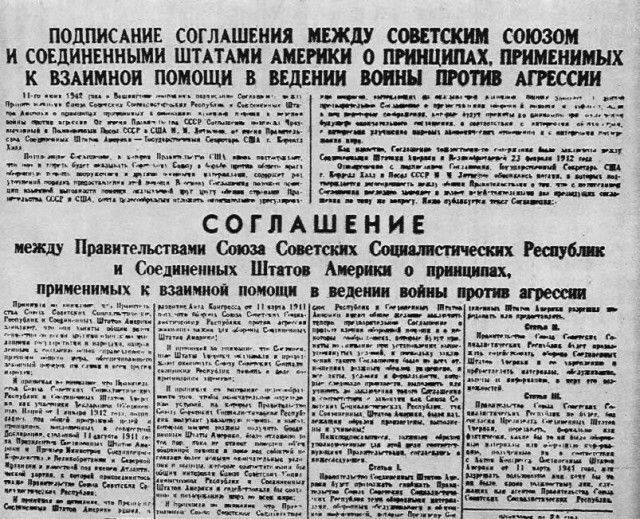
A week later, on June 20, 1942, by decree of the Presidium of the Supreme Soviet of the USSR, the title of Hero of the Soviet Union was awarded to Major S. Asyamov (posthumously), Major E. Pusep, S. Romanov, and A. Shtepenko by decree of the Presidium of the Supreme Soviet of the USSR. Other crew members who took part in this flight are co-pilot V. Obukhov, flight engineers S. Dmitriev and N. Zolotarev, radio operators D. Kozhin, B. Nizovtsev, P. Belousov. S. Mukhanov. I. Goncharov. P. Salnikov, V. Smirnov - were awarded high state awards. Major V. Obukhov, who by October 1943, had 156 sorties, 13 March 1944, was also awarded the title Hero of the Soviet Union.
Sources:
Golovanov A. Long-range bomber. M .: Tsentrpoligraf, 2008. C. 123-128.
Maslowski L. Flight Commissar for Foreign Affairs VM Molotov in the US in June 1942 years // Newspaper "Tomorrow". 18 March 2015.
Chuev F. One hundred and forty conversations with Molotov. M .: Terra, 1991. C. 124-126.
Shevchenko V. Through the UK to Washington // Aviation and Cosmonautics. 1992. No.2. C. 26-27.
Velichko V. Flights V.M. Molotov to the UK and the USA. 1942 year // Almanac "Lubyanka". 14 October 2011.
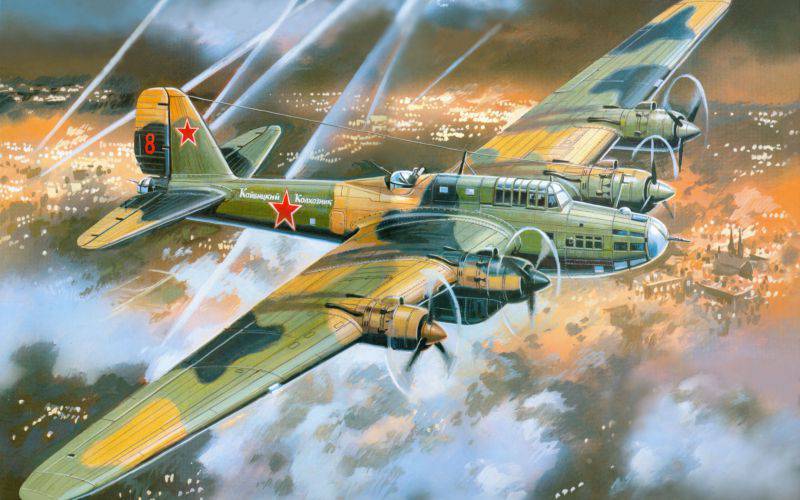
Information